One of the first things we sought when we arrived in Cape Town was local food. After weeks of eating and asking we have come to the conclusion that there is no “typical” Capetonian food. Rather, the cuisine of the area is as complex and lively as its history.
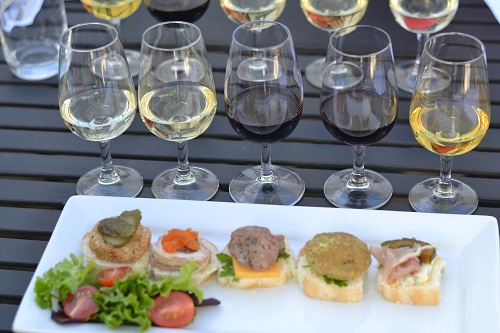
Indigenous local African cuisine tends to center around fluffy sorghum or maize porridge (pap), consumed with stews and roasted meats. We found it near to impossible to get our hands on authentic indigenous cuisine. It turns out that the new generation prefers the convenience and taste of fast food, resulting in KFC and McDonald’s success among populations that a generation ago ate more local cuisine. Some restaurants in the Townships still serve indigenous fare, but we were advised not to explore them on our own. Those in the city that serve pap and stew tend to cater to the tourists (like us) who seek local food in a safe environment. These establishments come complete with staged music and curios (not our scene).
We turned our search to more recent history. Around the 17th century, European cuisine arrived with settlers from Portugal, the Netherlands, Germany, France, and Britain. In our opinion, the greatest culinary contributions of this time were wine, brought by the French Hugenots, and koeksisters, Dutch honey-soaked fried dough.
Around this time came biltong (cured and sliced meats), a staple that weathered well and satisfied the tastes of both the indigenous and settler population. Biltong is most often made with beef, but any game from kudu to ostrich is fair game. One can’t walk too far in Cape Town without stumbling across Biltong. It’s available in every mini-mart and gas station, Biltong kiosks grace every mall, and there were several biltong stalls lining the path to the rugby game we attended yesterday. Capetonians consume biltong at rugby games with the same joy as Americans consume hot dogs during baseball.
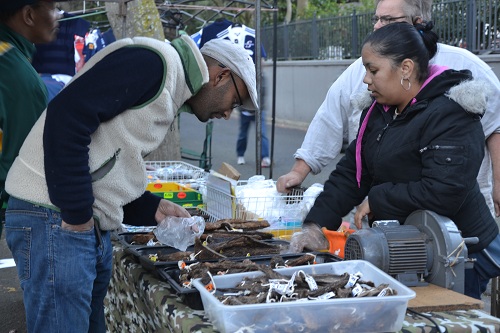
The settlers brought slaves from South Asia and with them came the influence of spices and peppers. Fish was used in interesting new ways in pickles and stews and meat was turned into exciting dishes such as bobotie, sweet and spicy minced meat baked with an custard-like topping. The collective influence that slaves had on the cuisine of the area is now refered to as Cape Malay cuisine, and the best place to experience Cape Malay food is in Bo Kaap, previously known as the Malay Quarter.
Under apartheid certain racial groups were forced into demarcated areas. Ba Kaap was for Cape Muslims. Today Bo Kaap is a colorful maze of painted houses lining cobble stone streets.
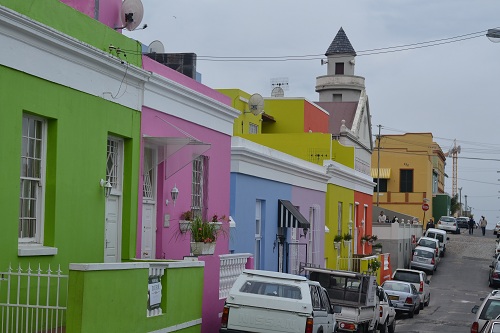
The Muslim influence is strong in the area’s mosques and culture.
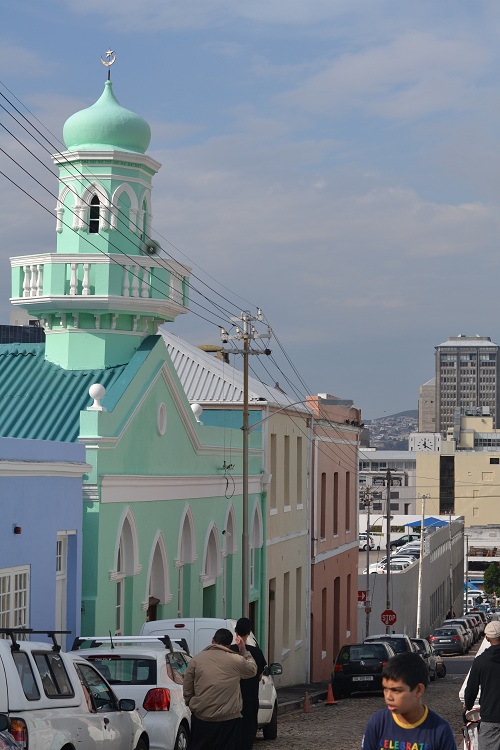
And the food is divine. We ate at Bismillah, one of the oldest restaurants in the area. The food here has a heavy Indian influence, albeit much more toned down on the spice level and sweeter. In Penang we learned that the Indonesian-influenced food is generally sweet and we tasted the same flavorings in the Cape Malay dishes.
With the oceans lapping around Cape Town, it’s hard to miss the fish. Our lunch today was at Die Strandloper, which offers a set ten course seafood feast on the shores of Langebaan, a small town an hour north of Cape Town. This course is crayfish braii – traditional South African BBQ.
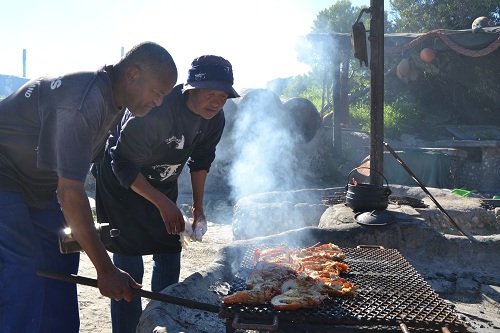
Whether European, African or Asian, or a little bit of everything, the meals we have had in Cape Town have been great. Even the grocers seem to have higher quality wares than what we get at home. Given the climate and availability of land, vegetables and fruits tend to be fresher. Grass-fed cows and free-range chicken are ubiquitous in restaurants and stores. When you have good ingredients and a rich cultural history from which to draw, it’s hard not to get great results.
